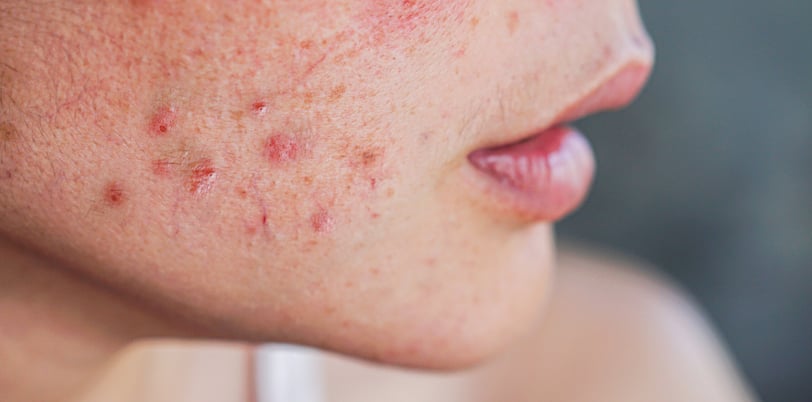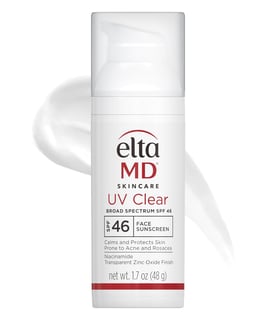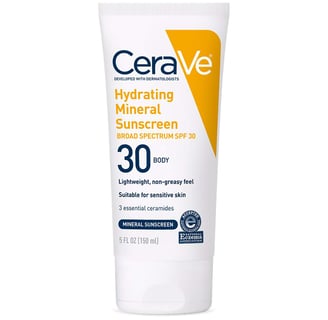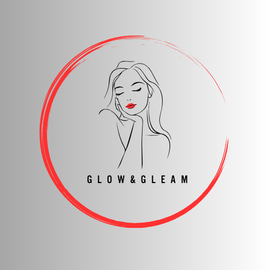Taming Acne: The Ultimate Skincare Routine for Clear, Radiant Skin
This blog post shares an effective, step-by-step skincare routine specifically designed to combat acne and promote clear, radiant skin. It includes personal insights, product recommendations, and practical tips to help you take control of breakouts and boost your skin’s natural glow.
Glow&Glow
5/23/20258 min read


Understanding Acne and Its Causes
Acne is a common skin condition that varies significantly in type and severity. The most recognized forms of acne include inflammatory acne, such as papules and pustules, and non-inflammatory acne, primarily comprising comedones or blackheads and whiteheads. Each type manifests based on differing skin conditions and individual factors that contribute to outbreaks.
The development of acne is influenced by several factors, with hormones playing a pivotal role. During puberty, hormonal changes can stimulate the sebaceous glands, leading to an increase in oil production. This excess oil, combined with dead skin cells, can clog pores and create an environment conducive to acne formation. Hormonal fluctuations related to menstrual cycles, pregnancy, or conditions like polycystic ovary syndrome (PCOS) can exacerbate this process.
Diet also plays a significant role in acne development. Research suggests that high-glycemic foods, including sugary snacks and refined carbohydrates, may trigger insulin spikes and lead to increased oil production. Studies indicate that dairy consumption might further contribute to acne incidence. By evaluating dietary habits, individuals may find that adjusting their intake could positively impact their skin health.
Genetics cannot be overlooked in the discussion of acne causes. A family history of acne may predispose individuals to similar skin issues. This genetic component influences skin type, oil production, and overall susceptibility to breakouts, making it crucial for some individuals to adopt a more tailored approach to their skincare routine.
By understanding these underlying causes of acne, individuals can better address their specific issues. This knowledge empowers them to create a personalized skincare routine that considers hormonal balance, dietary choices, and genetic predispositions, leading to clear and radiant skin.
Step 1: Cleansing - The Foundation of Clear Skin
Effective skincare begins with a thorough cleansing routine, particularly for individuals suffering from acne-prone skin. The primary purpose of cleansing is to remove dirt, excess oil, and impurities that can contribute to breakouts. Selecting the right cleanser is essential, as it directly affects skin health and clarity. There are two main types of cleansers: foaming and cream. Each has its unique benefits tailored to specific skin types and conditions.
Foaming cleansers are generally preferred for oily and acne-prone skin, as they provide a deep clean that helps eliminate excessive sebum production. The lather produced by foaming cleansers can effectively lift away impurities and dirt, reducing the chances of pore congestion—a common trigger for acne formation. On the other hand, cream cleansers are ideal for individuals with sensitive skin or those who experience dryness. These cleansers offer gentle hydration while still cleansing effectively, helping to maintain the skin's natural moisture barrier.
When selecting a cleanser for acne-prone skin, look for products containing active ingredients such as salicylic acid or glycolic acid. These ingredients work gently yet effectively to exfoliate the skin, unclog pores, and reduce inflammation, providing a comprehensive approach to acne management. For sensitive skin types, consider products that are fragrance-free and labeled as non-comedogenic to ensure that they do not further irritate the skin.
Among the excellent options available on Amazon, some notable recommendations include CeraVe Foaming Facial Cleanser, which combines gentle cleansing with hydrating ceramides, and Neutrogena Oil-Free Acne Wash, known for its salicylic acid content that effectively targets acne. Both of these cleansers have received positive feedback from users for their effectiveness in promoting clearer skin while being suitable for sensitive skin types. By starting your skincare routine with the right cleanser, you lay a solid foundation for achieving clear, radiant skin.
Step 2: Toner - Balancing Your Skin’s pH
The incorporation of a toner into your skincare routine is essential for achieving balanced skin, particularly for those with acne-prone complexions. After cleansing, it is common for residual impurities and makeup remnants to linger on the skin. A toner effectively removes these traces, ensuring that the skin is prepared to absorb subsequent treatments and products more efficiently. One of the key roles of a toner is to restore the skin’s natural pH balance, which can be disrupted during the cleansing process. An optimal pH level aids in maintaining the skin's barrier function, promoting overall health and resilience against various skin issues, including acne.
For individuals struggling with breakouts, selecting the right toner can significantly enhance their skincare regimen. Look for a formulation that features soothing ingredients such as witch hazel, chamomile, or aloe vera, as these components can calm inflammation and reduce redness commonly associated with acne. Additionally, toners that contain salicylic acid or glycolic acid may aid in purging clogged pores and preventing future breakouts while promoting cell turnover.
Several premium toner options available on Amazon cater specifically to the needs of acne-prone skin. The Thayers Witch Hazel Toner with Aloe Vera is a popular choice; its gentle and alcohol-free formulation helps to tighten pores while providing hydration. Another commendable option is the Paula’s Choice Skin Balancing Pore-Reducing Toner, which contains antioxidant-rich ingredients and is ideal for those experiencing oiliness and enlarged pores. Lastly, the Klairs Supple Preparation Facial Toner not only balances the skin's pH but also provides a layer of hydration with its mix of plant extracts.
In conclusion, incorporating a toner into your skincare routine is a vital step toward achieving clearer skin. By carefully selecting a product that suits your skin's unique requirements, you can effectively enhance pH balance, remove impurities, and pave the way for healthier skin.
Step 3: Serum - Targeted Treatment for Acne
Incorporating a serum into your skincare routine can significantly enhance your efforts to achieve clear and radiant skin. Serums are lightweight liquid formulations packed with concentrated active ingredients, specifically designed to penetrate the skin more deeply than traditional moisturizers. When targeting acne, the selection of serums becomes paramount, as the right products can effectively address breakouts while also catering to various skin types, including sensitive skin.
Among the most regarded ingredients for acne treatment are salicylic acid and niacinamide. Salicylic acid, a beta hydroxy acid (BHA), is known for its exfoliating properties, helping to clear pores and reduce inflammation associated with acne. It works by dissolving excess sebum and dead skin cells, preventing future breakouts. On the other hand, niacinamide, a form of vitamin B3, not only reduces acne but also improves the skin's texture and skin tone, making it a versatile option for those with acne-prone skin.
When selecting serums, consider popular options available on platforms like Amazon that have garnered positive feedback for their acne-fighting properties. For instance, serums featuring salicylic acid often come in formulations that balance efficacy with gentle skin care, ensuring they are suitable for sensitive skin types. Products infused with niacinamide may also exhibit anti-inflammatory effects, making them an excellent addition for managing redness and irritation.
To implement a targeted treatment effectively, it's recommended to use the serum after cleansing and before applying moisturizer. This allows the active ingredients to work effectively on clean skin. With the right serum in your regimen, you can expect enhanced results in your journey towards clear and radiant skin. Thus, choosing the appropriate serum tailored to your skin’s needs is essential for achieving successful outcomes in managing acne.
Step 4: Moisturizing - Hydration is Key
A common misconception among individuals dealing with acne is the belief that skipping moisturizer can help control the condition. However, maintaining hydration is crucial for sustaining a healthy skin barrier. When skin is dehydrated, it can lead to increased oil production as a compensatory mechanism, potentially resulting in further breakouts. Therefore, selecting the right moisturizer is vital for those with acne-prone skin.
An ideal moisturizer for acne-prone individuals should be non-comedogenic, which means it won't clog pores. Look for products that contain lightweight, oil-free ingredients that effectively hydrate without overwhelming the skin. Ingredients such as hyaluronic acid, glycerin, and aloe vera provide excellent hydration while being gentle and effective on sensitive skin. These ingredients help to retain moisture, ensuring your skin remains balanced and healthy.
For premium options, there are several highly-rated moisturizers available on Amazon specifically designed for acne-prone skin. One such option is the Neutrogena Hydro Boost Water Gel. This product is beloved for its oil-free formula featuring hyaluronic acid, which provides an instant boost of hydration without leaving a greasy finish. Another excellent choice is the La Roche-Posay Effaclar Mat, which not only hydrates the skin but also helps to reduce oiliness, making it suitable for those experiencing both acne and shine.
Additionally, the CeraVe PM Facial Moisturizing Lotion is a wonderful option as it contains niacinamide, which can help to soothe irritated skin while also providing essential hydration overnight. Choosing a moisturizer that complements your specific skincare routine is key to achieving clear, radiant skin. By integrating the right moisturizing product, you will support your skin's health while effectively managing acne.
Step 5: Sun Protection - Shielding Your Skin
Proper sun protection is a critical component in any well-rounded skincare routine, particularly for individuals struggling with acne. Harmful ultraviolet (UV) rays from the sun can aggravate existing acne lesions and increase the risk of scarring, making the use of sunscreen an essential step. Broad-spectrum sunscreens provide a shield against both UVA and UVB rays, ensuring a more comprehensive level of protection. It is important to select a sunscreen that is specifically formulated for the needs of acne-prone skin, as traditional sunscreens may contribute to additional breakouts.
When selecting a sunscreen, consider those labeled as non-comedogenic and hypoallergenic. These formulations are designed to minimize the likelihood of clogging pores and triggering acne flare-ups, which is crucial for maintaining clear skin. The American Academy of Dermatology recommends applying a sunscreen with an SPF of at least 30, which provides substantial protection without compromising skin health. Even on cloudy or cooler days, UV rays can penetrate the skin, making daily application of sunscreen essential for effective skin protection.
Here are a few premium sunscreens available on Amazon that are well-suited for sensitive and acne-prone skin:
EltaMD UV Clear Broad-Spectrum SPF 46: This formula is lightweight and contains niacinamide, which can help calm the skin and reduce inflammation.
Neutrogena Hydro Boost Water Gel Lotion SPF 30: With a water-gel texture, this sunscreen offers hydration without weighing the skin down or causing breakouts.
CeraVe Hydrating Mineral Sunscreen SPF 30: This mineral-based sunscreen provides important hydration while protecting the skin barrier.
Incorporating sun protection into your daily skincare regimen not only safeguards your skin from potential damage but also enhances its overall health and appearance.
Implementing Your Skincare Routine
Establishing an effective skincare routine is essential for managing acne and achieving clearer, more radiant skin. The key to success lies in consistency, timing, and proper layering of products. By implementing a few strategic steps, individuals can significantly improve their skin's appearance over time.
To begin, it is crucial to set aside specific times each day for your skincare routine. Morning and evening rituals should be incorporated into your schedule to create a habit that is easy to maintain. Start your day by cleansing your face to remove any excess oil and impurities that may have accumulated overnight. Select a gentle cleanser that suits your skin type; this is vital in preventing irritation while effectively addressing acne concerns. After cleansing, consider applying a toner that aids in balancing your skin's pH levels. This step prepares the skin to absorb the subsequent treatments more effectively.
The next step involves applying targeted treatments, such as serums or spot treatments. Utilize products containing salicylic acid or benzoyl peroxide, which are known for their acne-fighting properties. These treatments should be applied only to areas that require attention, allowing them to penetrate and work effectively. Once this step is complete, apply a lightweight moisturizer to hydrate the skin without clogging pores. It is a common misconception that oily skin does not require hydration; however, adequate moisturization is key to maintaining balanced skin.
Evenings are an opportunity to enhance your routine further. Consider incorporating exfoliation 1-2 times a week to remove dead skin cells and promote cell turnover. Always remember to follow up with sunscreen application during the day, as this safeguards your skin from UV damage. Lastly, find motivation in keeping a skincare journal to track your progress and celebrate small victories. By adhering to this skincare regimen, individuals can work towards achieving clear, glowing skin.
Affiliate Disclosure:
This post contains affiliate links. If you make a purchase through these links, I may earn a small commission at no extra cost to you. Thank you for supporting my blog!






